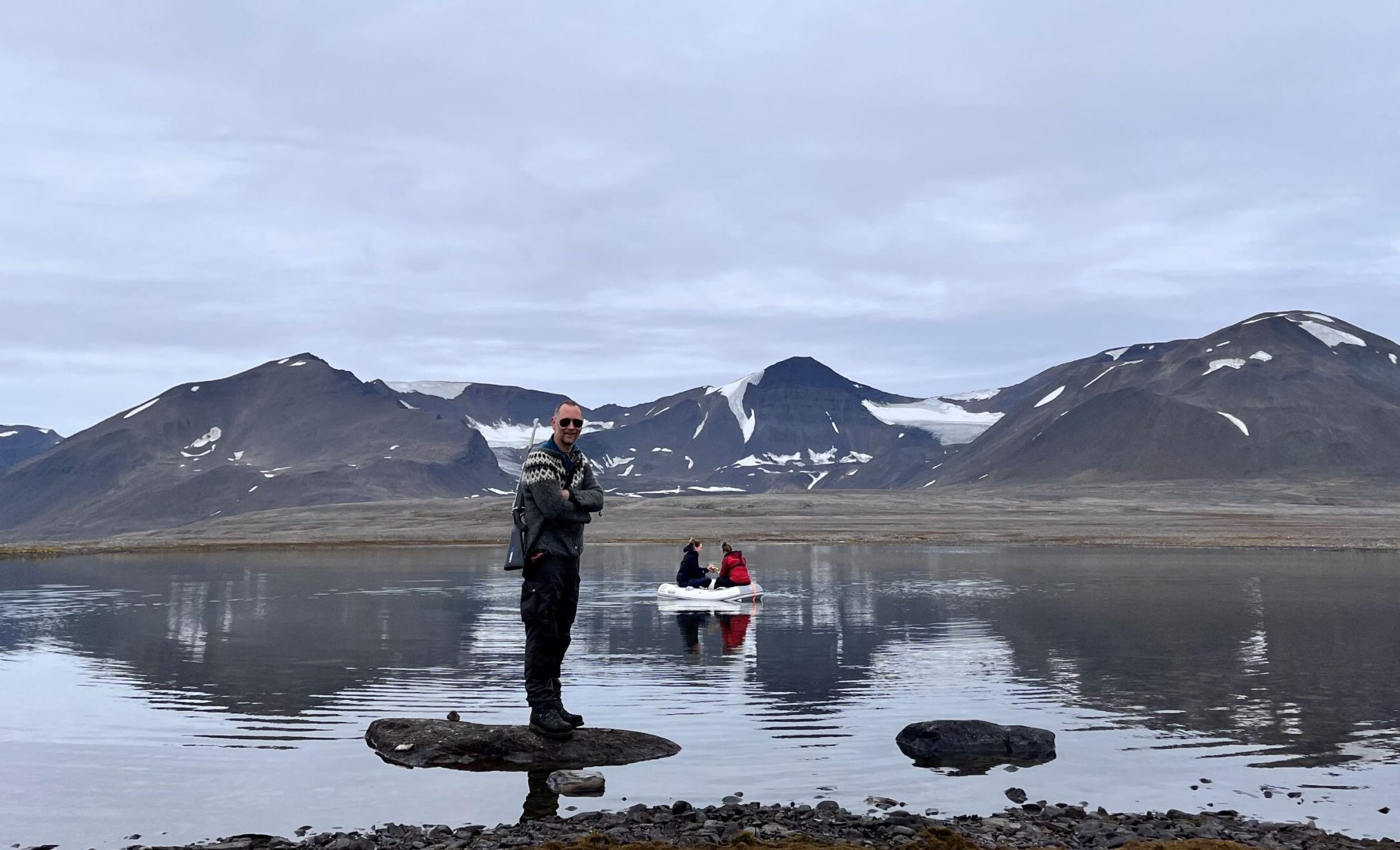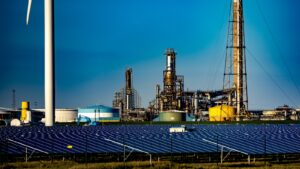While most lakes release methane from their sediment, new research has found that some are releasing higher-than-expected amounts.
In the new study, led by Marie Bulínová from UiT The Arctic University of Norway, an international team investigated methane dynamics in 10 Arctic and subarctic lakes across Svalbard and Scandinavia.

Professor Anders Schomacker (UiT) keeps watch for polar bears while overseeing Marie Bulínová and Dr. Alexandra Rouillard as they core lake sediment from a small boat in Wijdefjorden, Svalbard.
They found that methane production is most intense in the top 10 cm of sediment, where fresh organic material and active microbial communities converge. These conditions are especially prominent in lakes with abundant algae, aquatic plants and surrounding vegetation.
The team used a combination of porewater modeling and mass transfer estimates to calculate how methane moves from the lakebed into the water column.
Porewater refers to the water trapped in the fine spaces between sediment particles, where methane can accumulate. By modeling the concentration and behaviour of this methane-rich water and estimating how fast methane transfers into the lake above, the researchers could determine how much gas is likely to be released into the atmosphere.
Their findings show that, although Arctic lakes typically emit less methane than lakes in warmer tropical or temperate regions, their emissions are highly variable. Some lakes release significantly more methane than others depending on local conditions.
Combined with the fact that the Arctic contains millions of lakes, this variability means that Arctic lakes could have a much larger role in the global methane budget than previously thought.
To better understand the drivers of these emissions, the researchers compared their results to data from over 60 lakes around the world. Using machine learning models, they identified key factors influencing methane release: the amount of biological productivity in the lake, regional climate conditions like temperature and precipitation, and the lake’s physical characteristics such as depth and shape.
The study reveals that even small changes in these factors, especially in a warming Arctic, can lead to significant increases in methane emissions, amplifying the effects of climate change.
Marie said: ‘We were surprised by how clearly the productivity of the ecosystem was linked to methane production. Our results show that warmer and wetter conditions increase biological productivity in Arctic lakes, which in turn drives methane emissions from their sediments.
‘One of the striking aspects of this work is how different Arctic lakes are from each other. Some release much more methane than others, depending on local factors like vegetation cover, lake shape, or sediment composition. That’s why it’s essential to study a wide range of lake types if we want to understand the Arctic’s role in future climate feedbacks.
‘The Arctic is changing rapidly, and we need to understand all the feedbacks involved,” said Marie. “Our work suggests that increases in ecosystem productivity—something we could think of being positive—can also increase methane release and further accelerate warming.’
Photo: Willem van der Bilt

















Leave a Reply